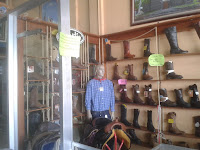Changing lifestyles affect the decisions Canadians make on
how and where they choose to live. Second homes are very popular for winter and
vacation getaways. Good news; it is possible to finance a second property with
owner-occupied (best) interest rates and rules.
A Primer on Getting a
Mortgage for a Foreign Property
Understand that Canadian lenders will only provide you a
mortgage if they can register their mortgage against a Canadian land title or
deed in a Canadian (not foreign) land title system, using Canadian lawyers in
order to enforce the contract in a Canadian court, if ever required.
This rule holds true for lenders in other countries as well
- they will only lend on properties within their legal jurisdiction.
So a Canadian lender mortgage on a foreign property is a
non-starter.
Here are some options:
Option 1 - there are a number of Canadian banks operating in
foreign countries, and a borrower typically must deal directly with the foreign
bank office, not a Canadian branch.
For the USA, where language and rules are quite similar to
Canada, this can be fairly straightforward.
In other countries, getting a mortgage locally can be time
consuming, exhausting, and expensive
Ask us for a referral if you would like to try this option.
Option 2 - for many, refinancing your principle Canadian
residence and using the equity to purchase your foreign home is by far the
simplest finance solution.
Up to 80% of the value of your home can be refinanced, for
example: if you have a home worth $500,000 and only hold a mortgage of $250,000
you can refinance to $400,000, payoff the $250,000 mortgage and use the other
$150,000 to buy a vacation home.
The interest rate will be lower because you remortgaged your
permanent residence and have no mortgage owing on the vacation home.
Makes it simpler and faster to buy in the foreign location.
There are no restrictions on the use of the vacation home,
such as if used for a rental







